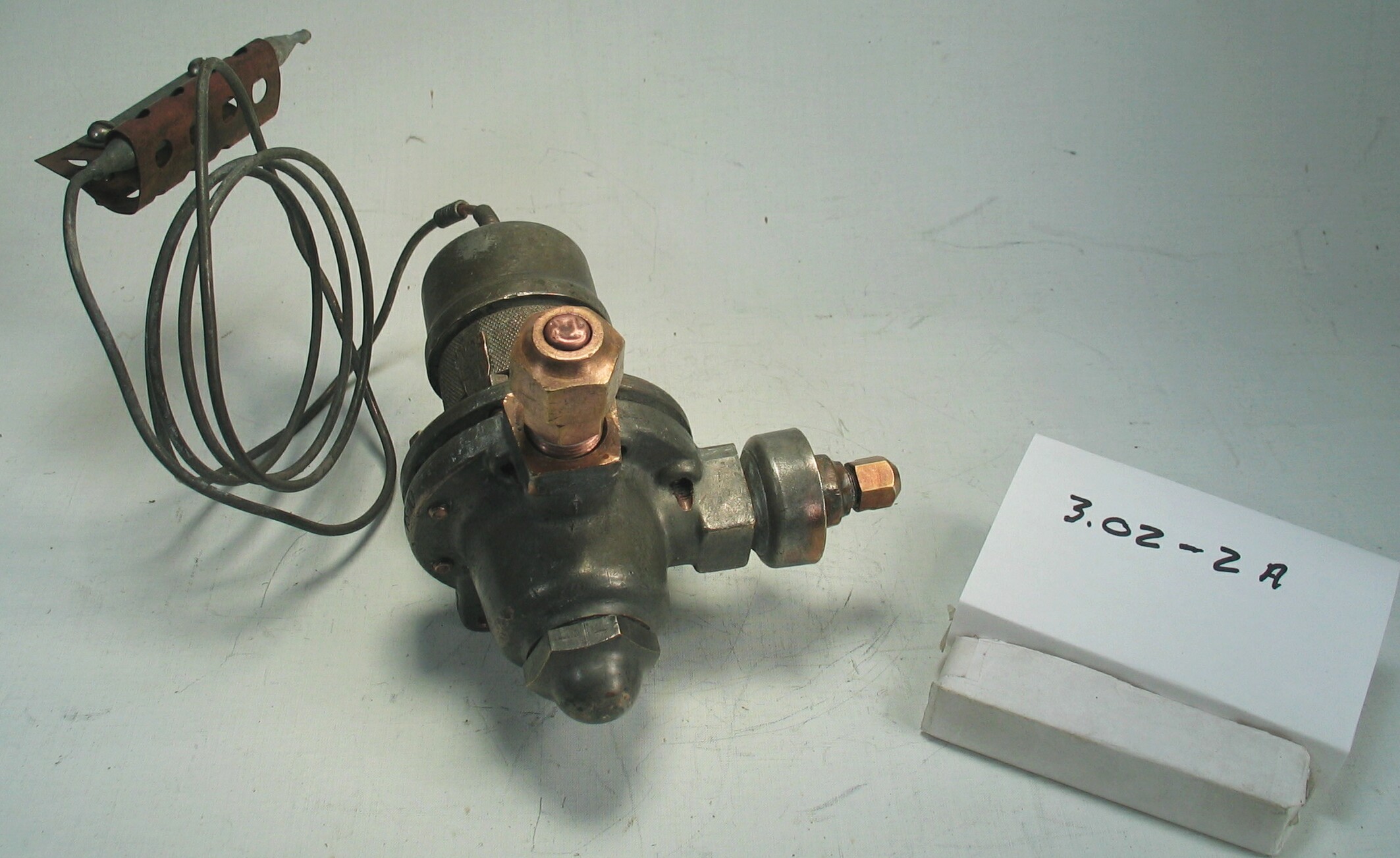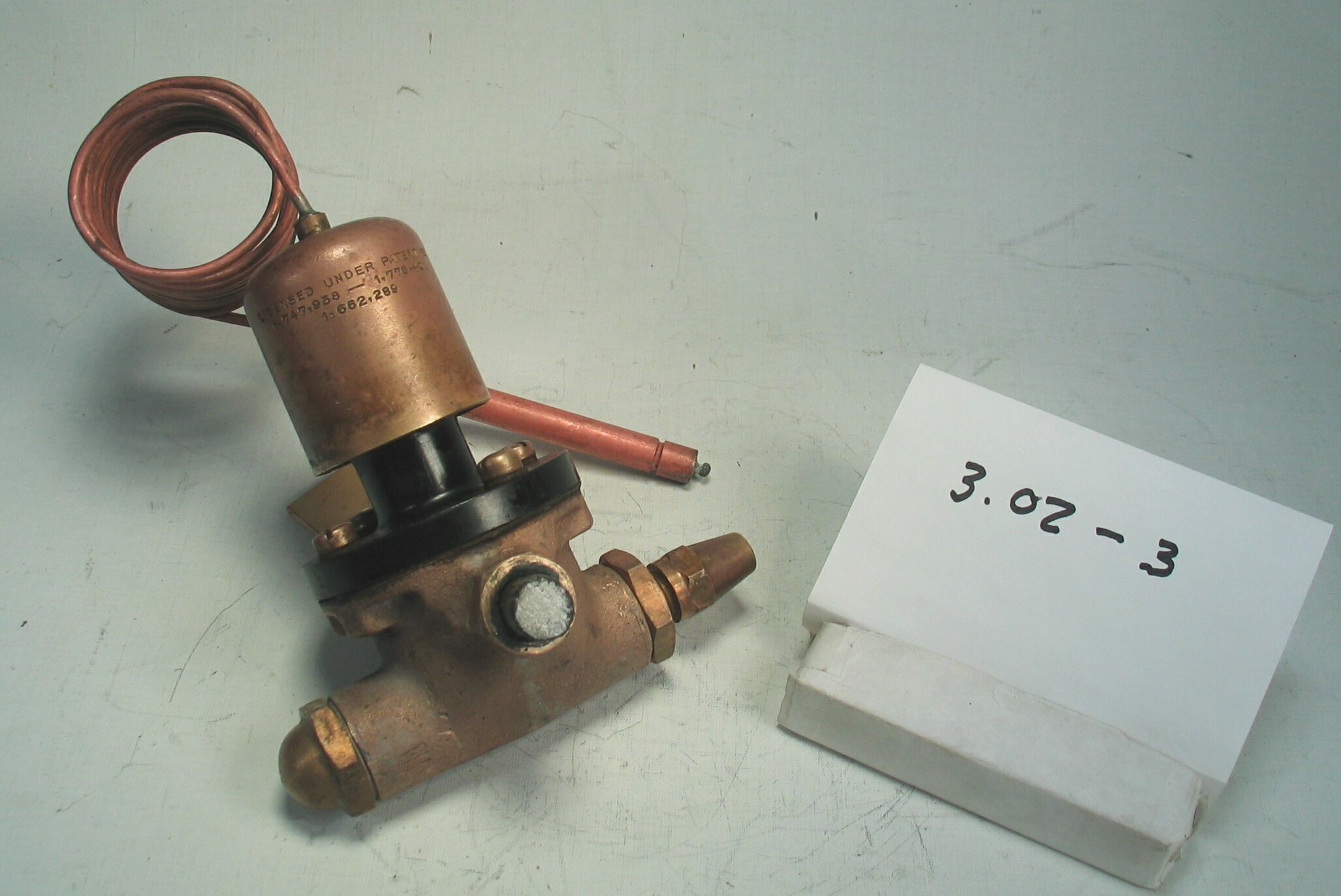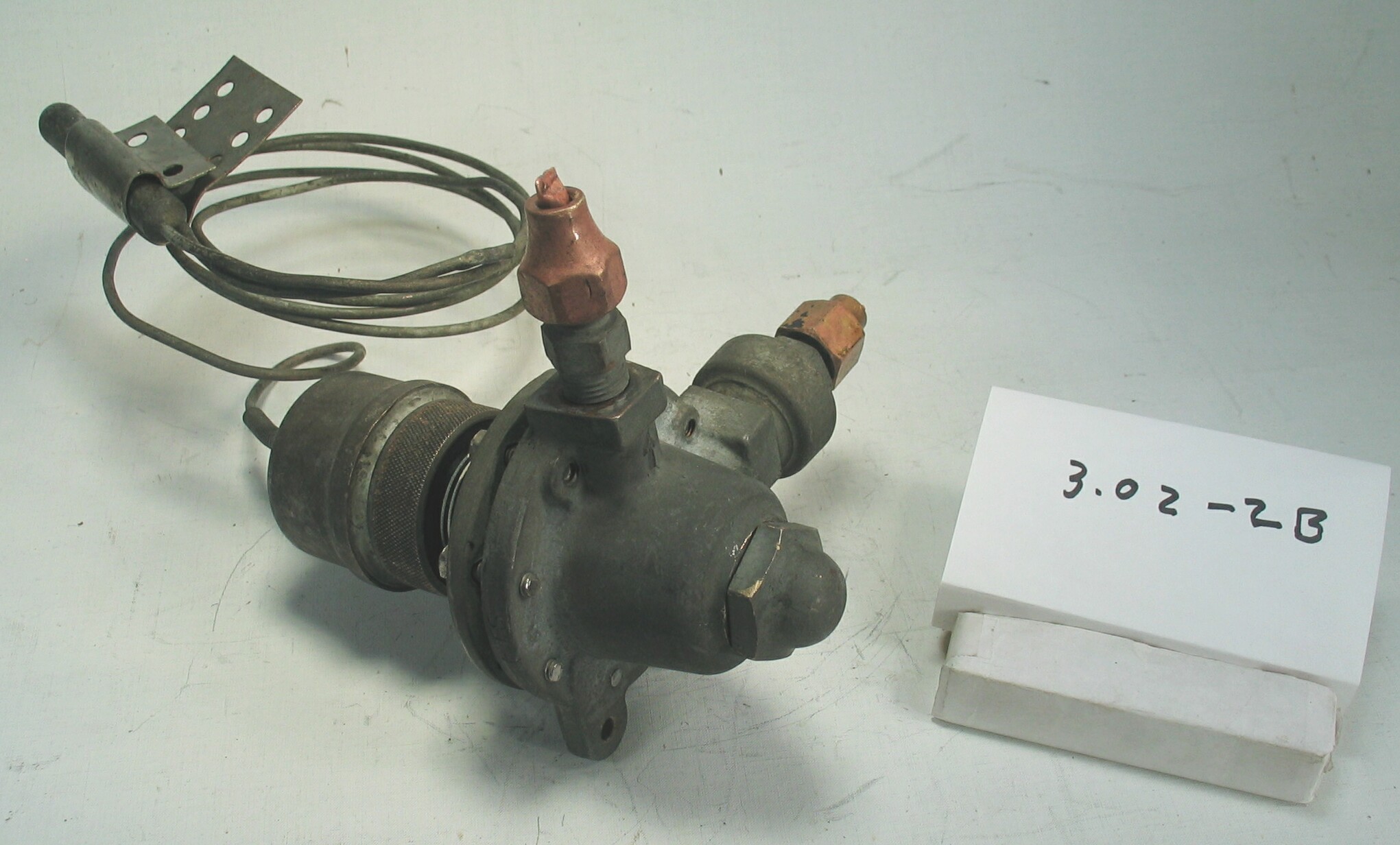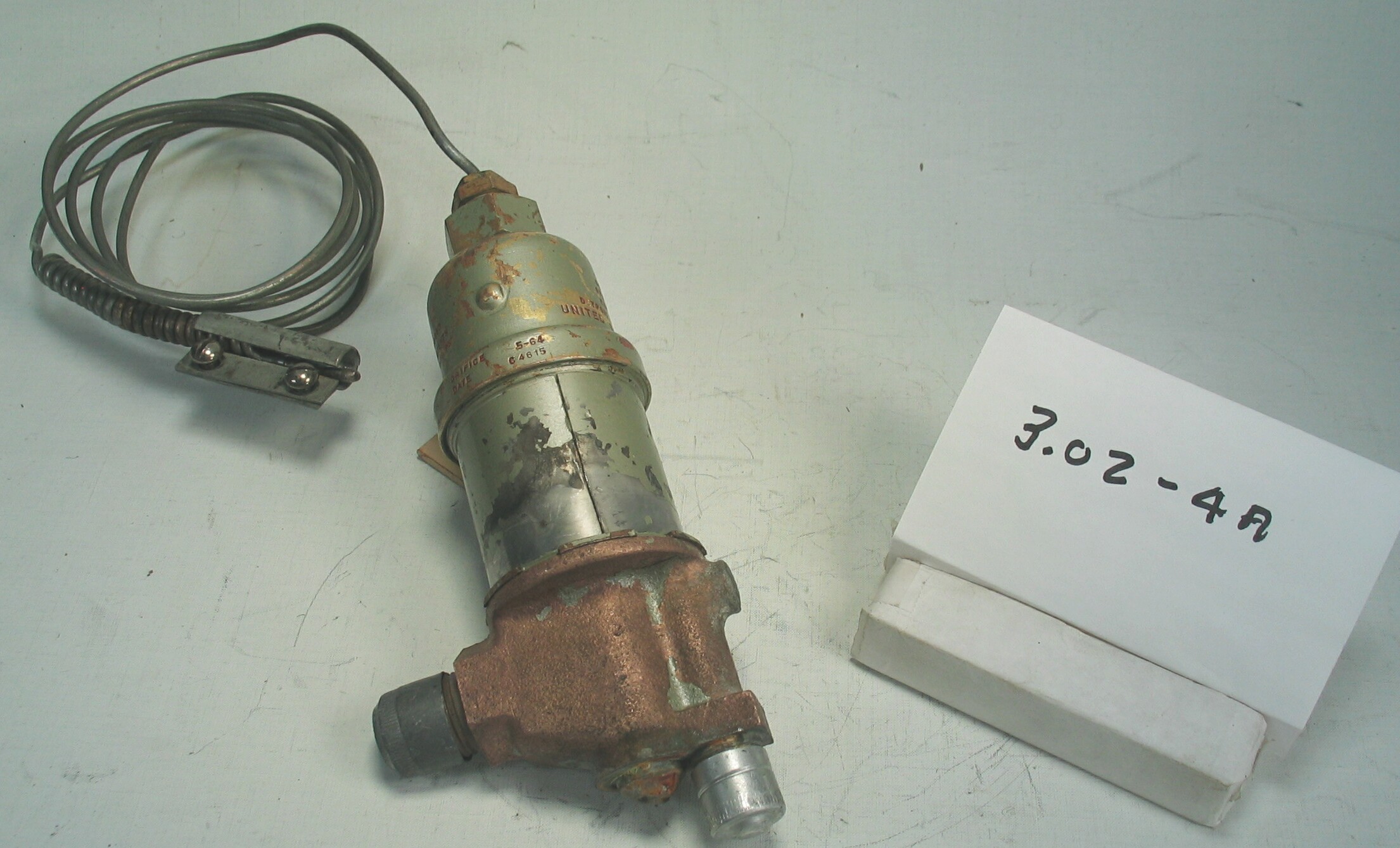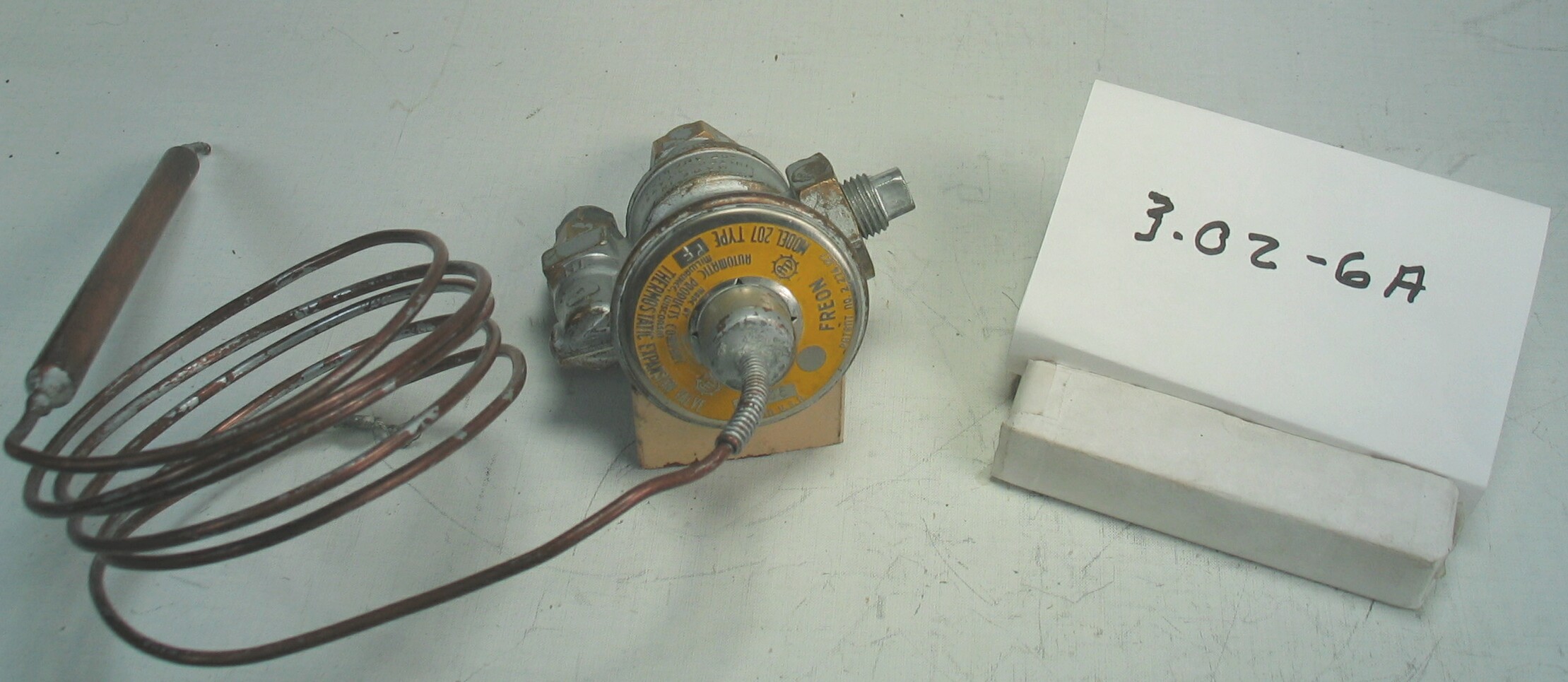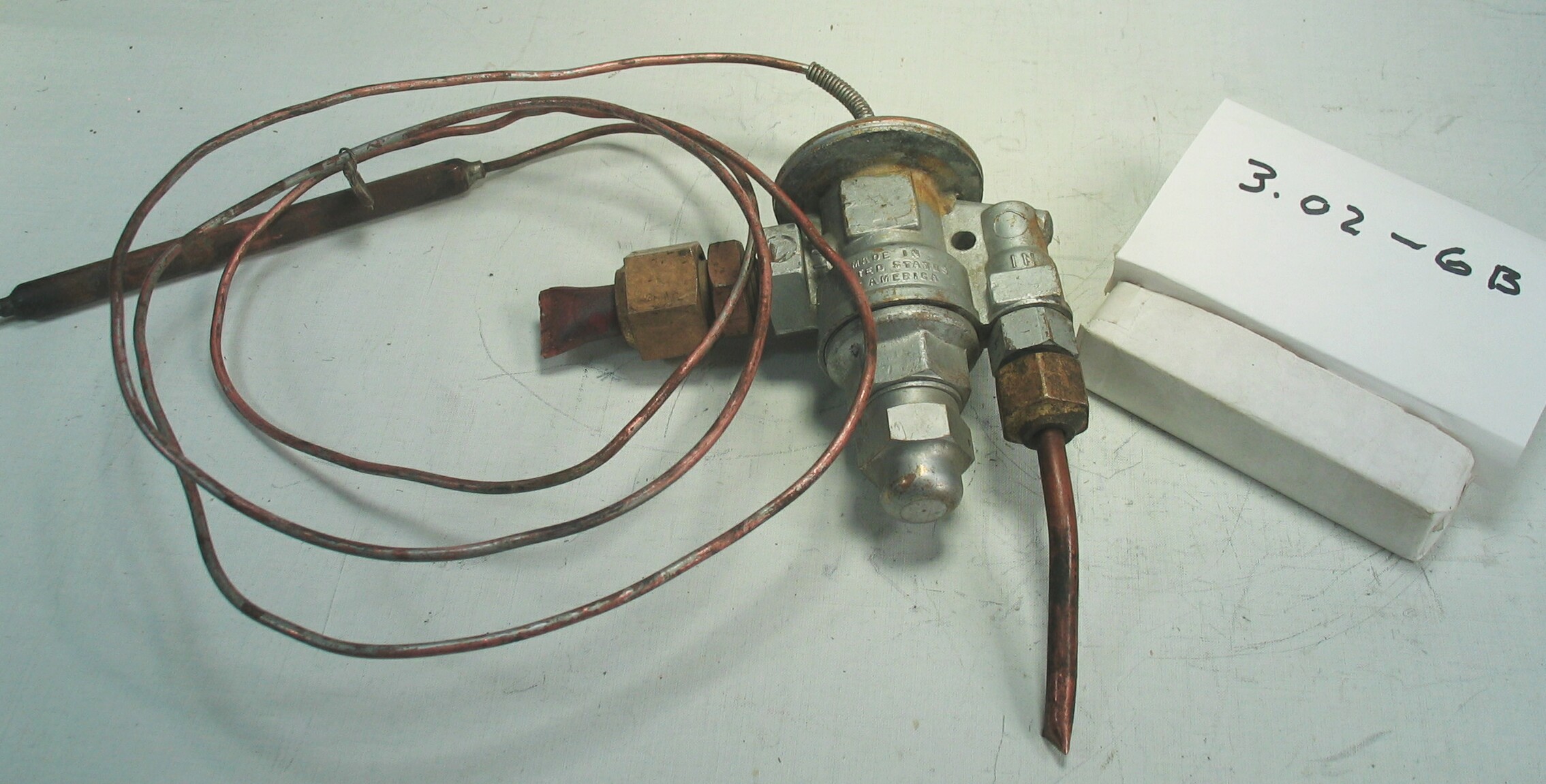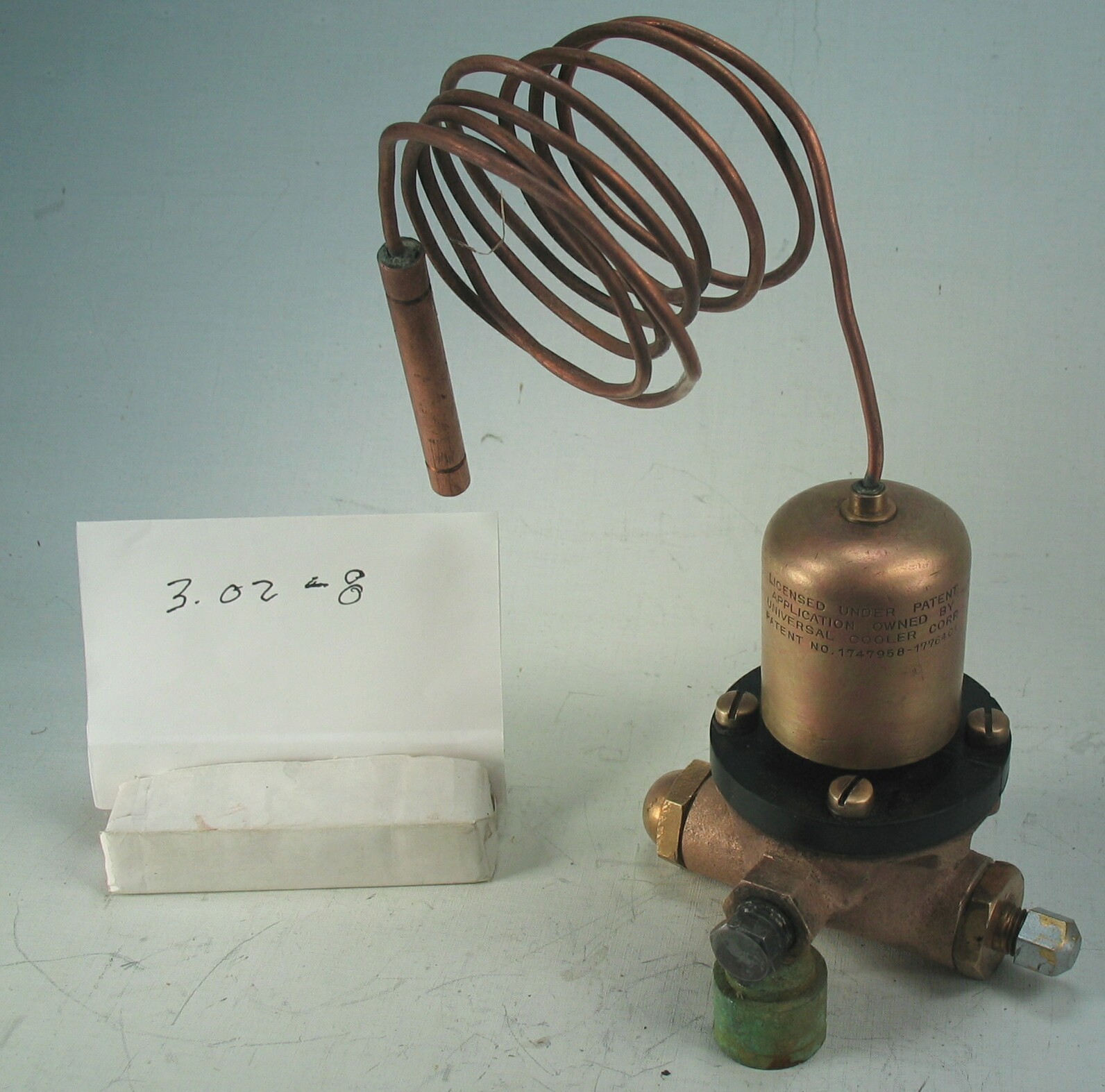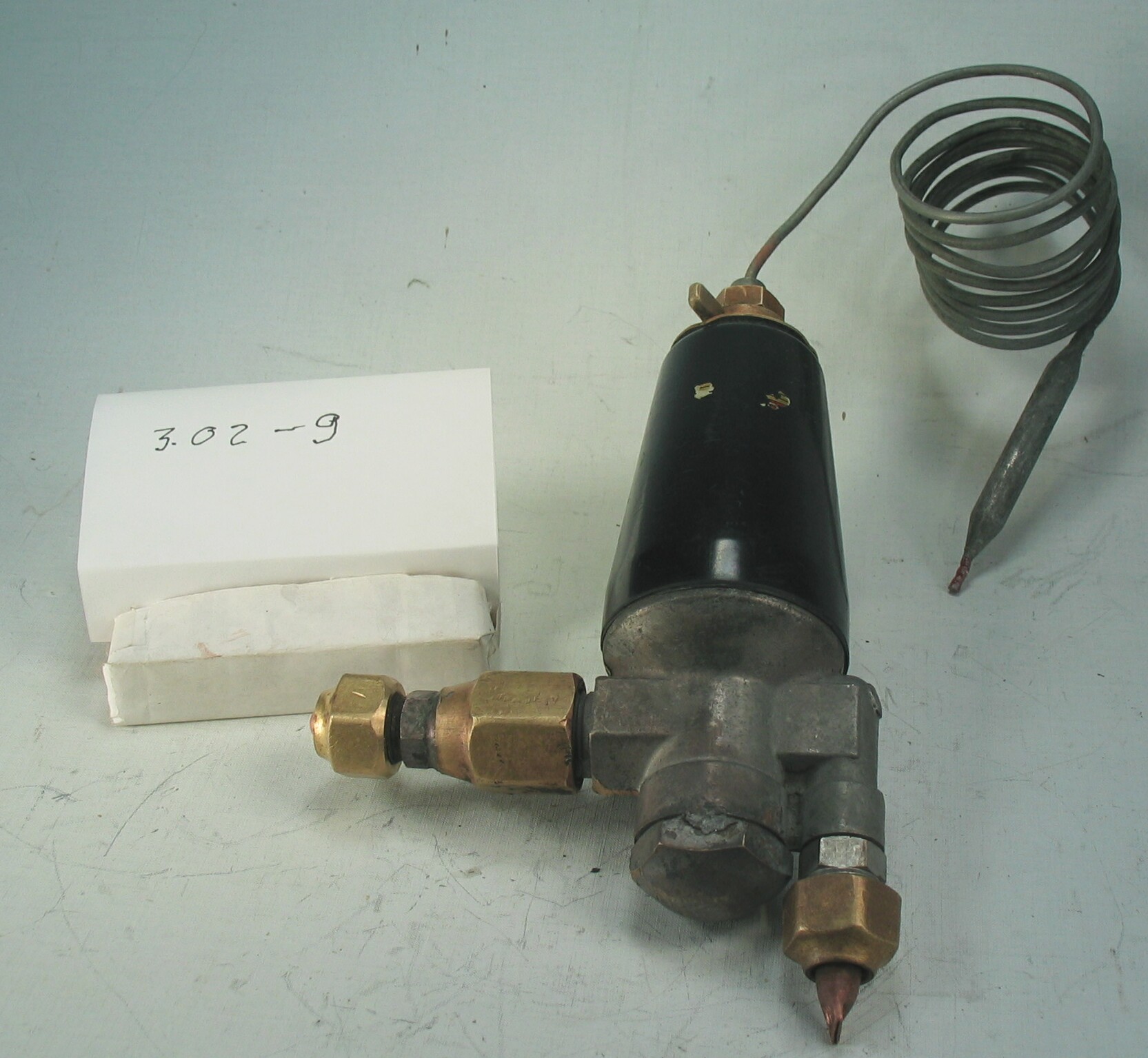3.02-14: Detroit Lubricator 1946 Thermostatic Expansion Valve
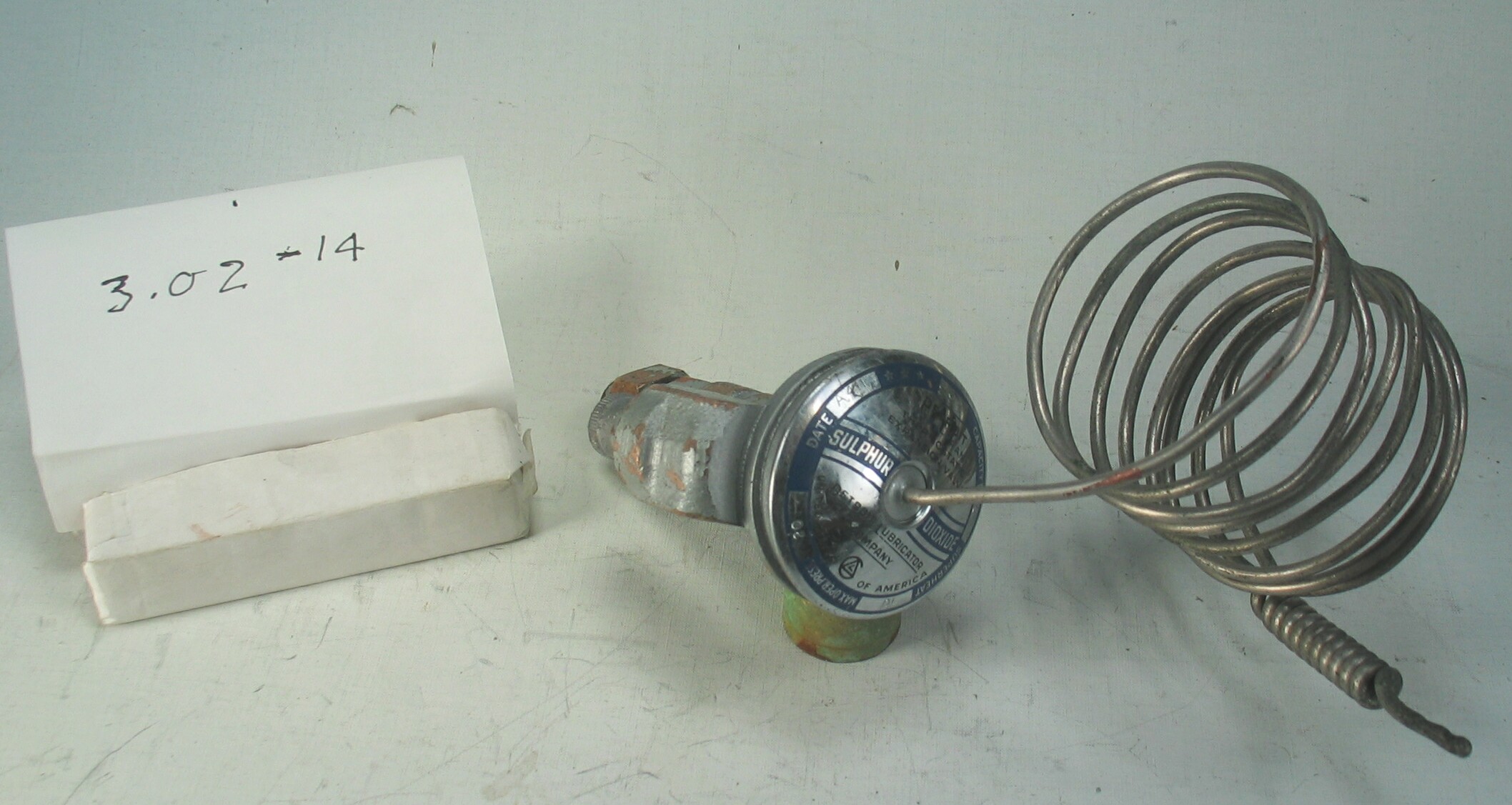
| HHCC Accession No. 2006.084 | HHCC Classification Code: 3.02-14 |
|---|
Description:
By the middle of the 20th century, the pressure was on for a new generation of compact thermostatic expansion valves to meet the growing market for small commercial refrigeration appliances. The 893, designed for this market, would raise eyebrows, with high style nameplate in bright chrome with blue highlighting. A sign of the times, Detroit would soon replace it with the even more compact design, the 777, Model 893, Detroit Lubricator, circa 1952.
Group:
3.02 Refrigerant Flow Controls - Commercial
Make:
Detroit Lubricator
Manufacturer:
Detroit Lubricator Co., Detroit
Model:
893
Serial No.:
Size:
4x 2 x 4 in. h
Weight:
3 lbs
Circa:
1946
Rating:
Exhibit, education, and research quality, illustrating the engineering design, construction, and operating principles, of a new generation of high styled, compact thermostatic expansion valves appearing towards the middle of the 20th century.
Patent Date/Number:
Provenance:
From York County (York Region) Ontario, once a rich agricultural hinterlands, attracting early settlement in the last years of the 18th century. Located on the north slopes of the Oak Ridges Moraine, within 20 miles of Toronto, the County would also attract early ex-urban development, to be come a wealthy market place for the emerging household and consumer technologies of the early and mid 20th century.
This artifact was discovered in the 1950’s in the used stock of T. H. Oliver, Refrigeration and Electric Sales and Service, Aurora, Ontario, an early worker in the field of agricultural, industrial and consumer technology.
Type and Design:
- ‘ ton capacity on SO2.
Construction:
Material:
Special Features:
High style chrome name plate and logo, a new slick look for the expansion valve
Accessories:
Capacities:
‘ ton SO2
Performance Characteristics:
Operation:
Control and Regulation:
Targeted Market Segment:
Consumer Acceptance:
Merchandising:
Market Price:
Technological Significance:
The 893 compact thermostatic expansion valve, although short lived, was a significant marker of the times, as the industry, responding and at the same time shaping the market place, moved to ever more compact, more sophisticated engineering designs based on cumulative know how. A sign of the now rapidly changing times, Detroit would soon replace the 893 with the even more compact design, the 777.
Industrial Significance:
High style chrome name plate and logo, a new slick look for expansion valves in the early post W.W.II years, reflecting the new interest of manufacturers in the emerging field of industrial design The now rapidly changing market place would trigger substantial investments in R and D by companies like Detroit. The life of this product would be a short one, soon to be replaced with an even more compact design, the 777. A sign of things to come.
Socio-economic Significance:
The socio-cultural significance of the impact of the unobtrusive, thermostatic expansion valve on life in Canada, throughout the latter part of the 20th century, would be hard to over-estimate. It would become the quintessential, automated refrigerant flow regulating device for most medium and larger commercial refrigeration applications, found in confectioneries, food stores and ware houses. It would help to make possible the wide array of foods and confectionery products Canadians would come to enjoy, as part of the late 20th century Canadian life experience.
Socio-cultural Significance:
Donor:
G. Leslie Oliver, The T. H. Oliver HVACR Collection
HHCC Storage Location:
Tracking:
Bibliographic References:
Air Conditioning Controls, Expansion Valves and Solenoid Valves, Detroit Controls, 1957
